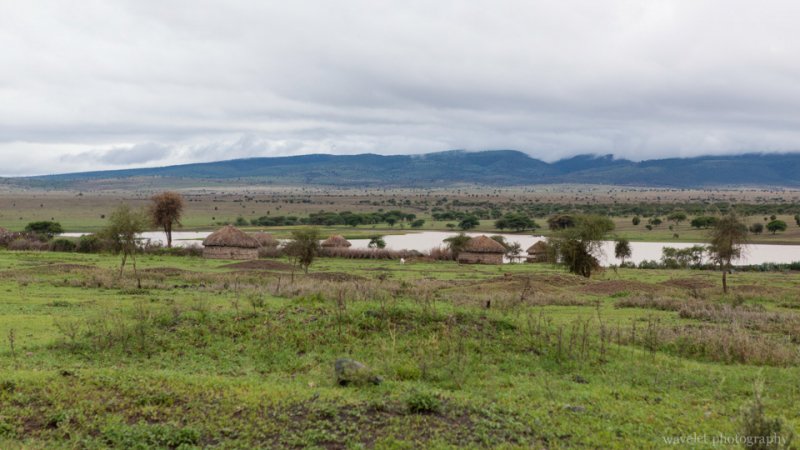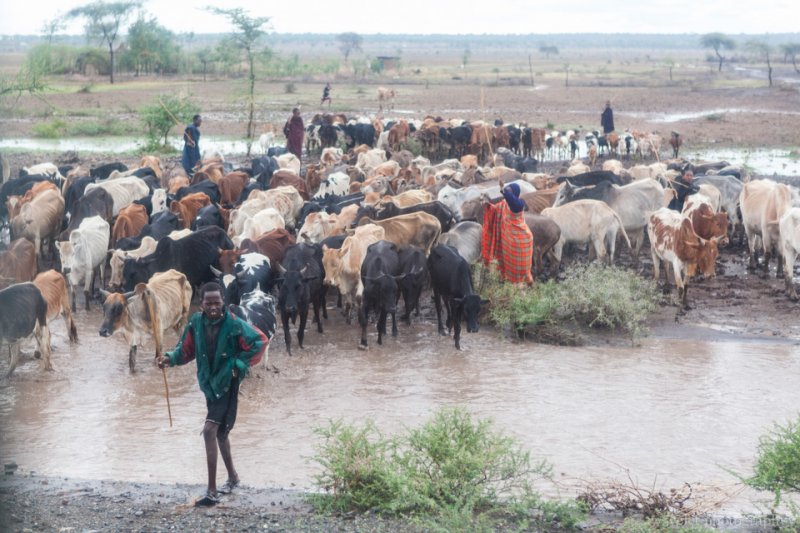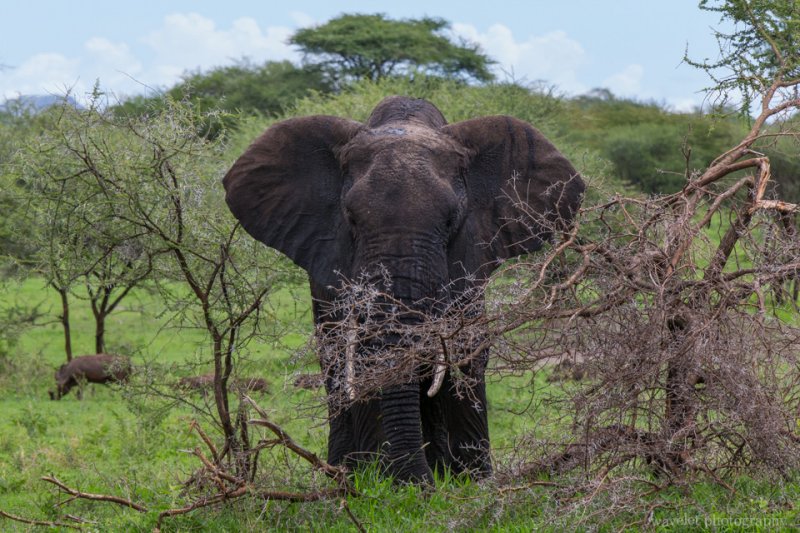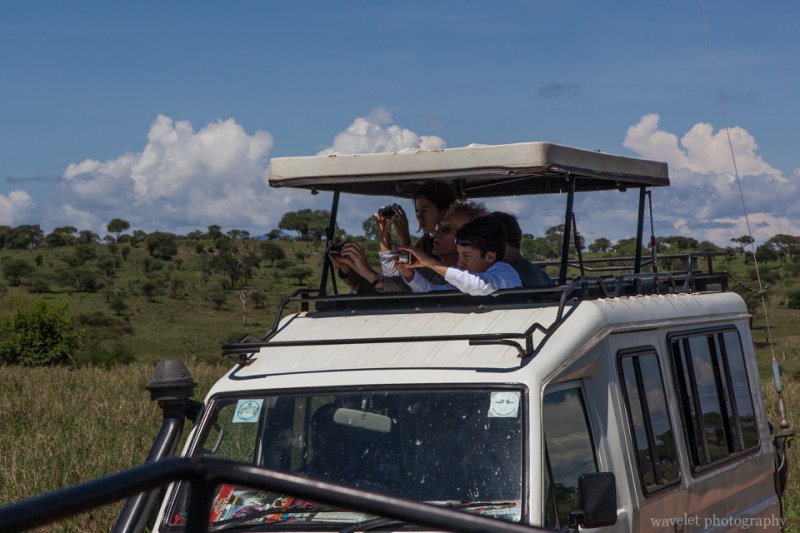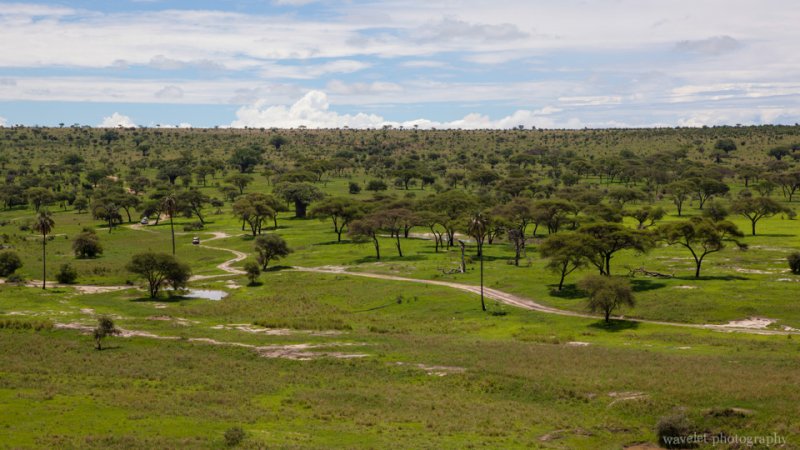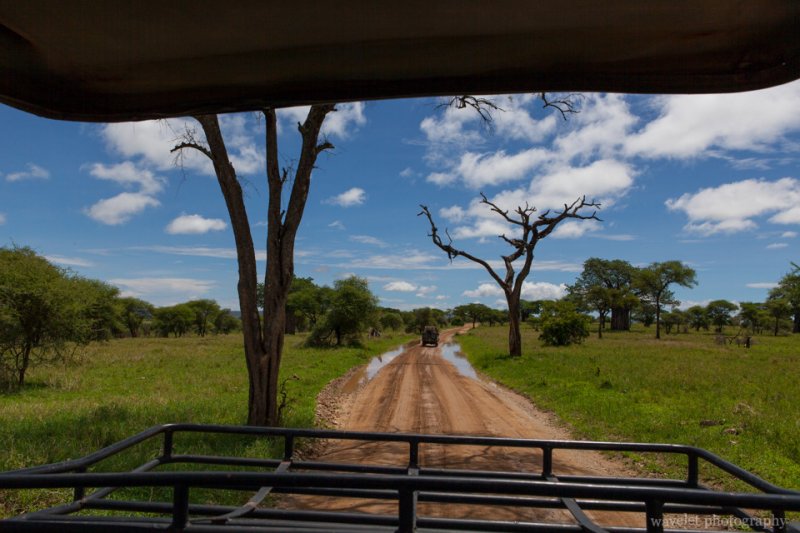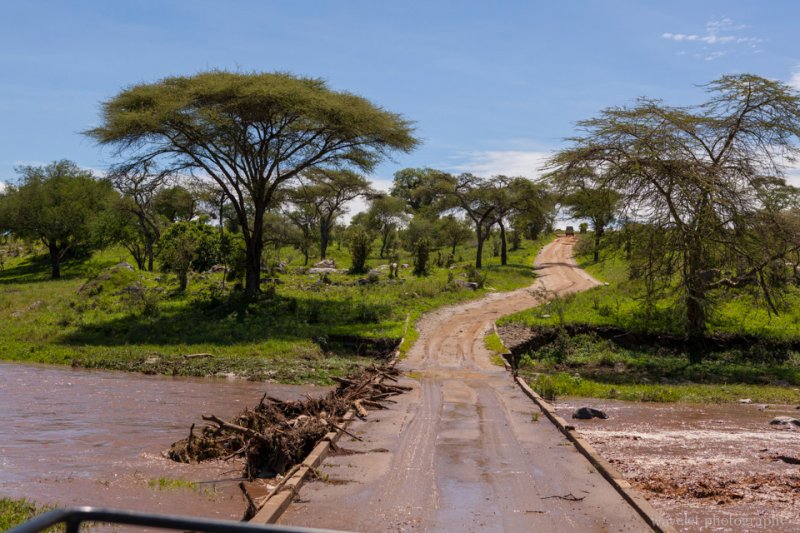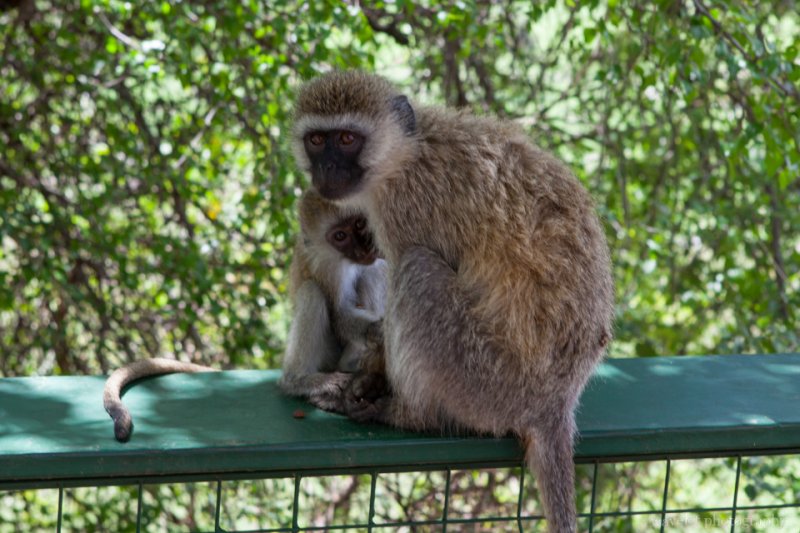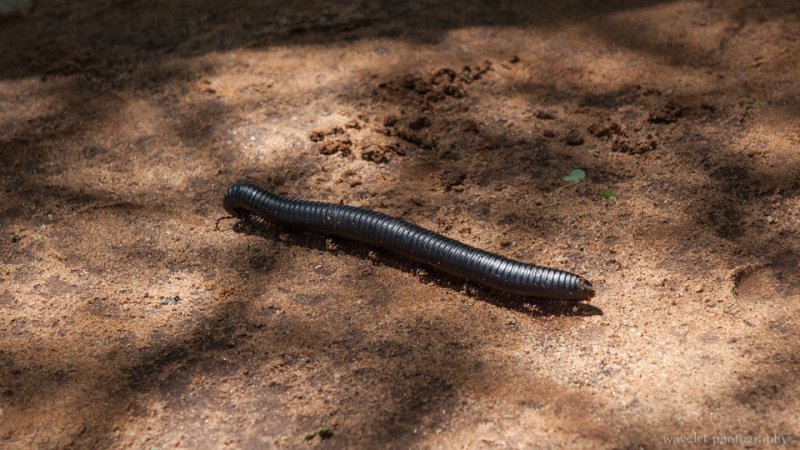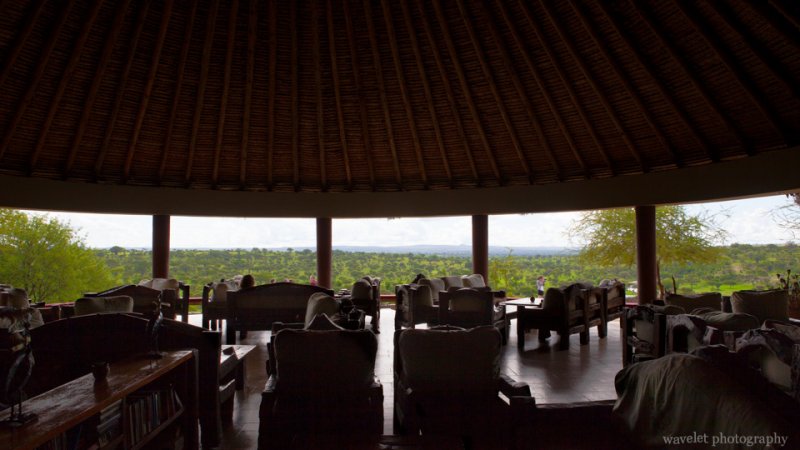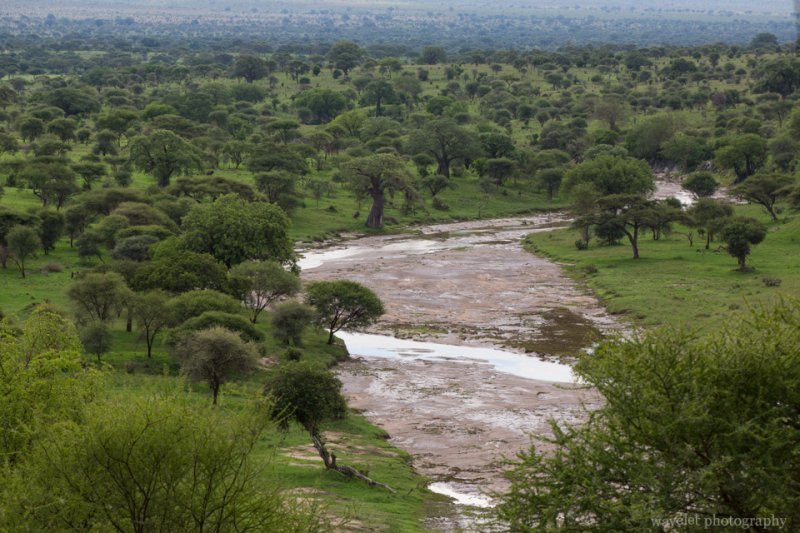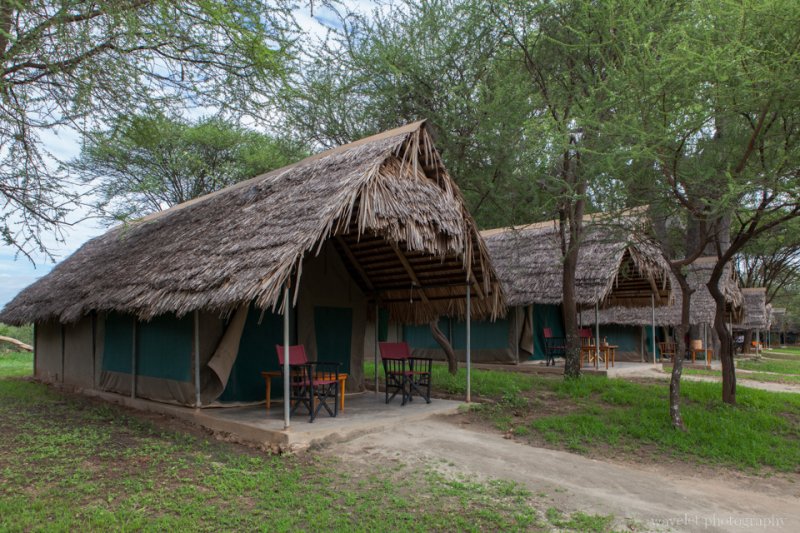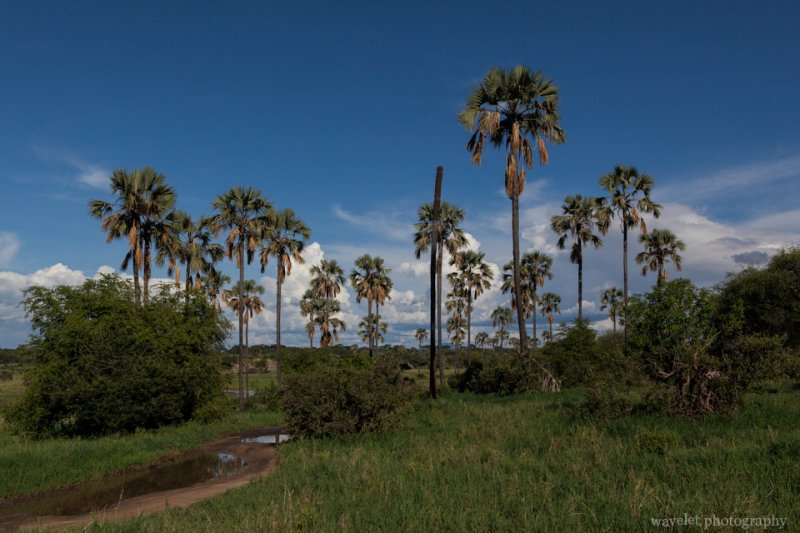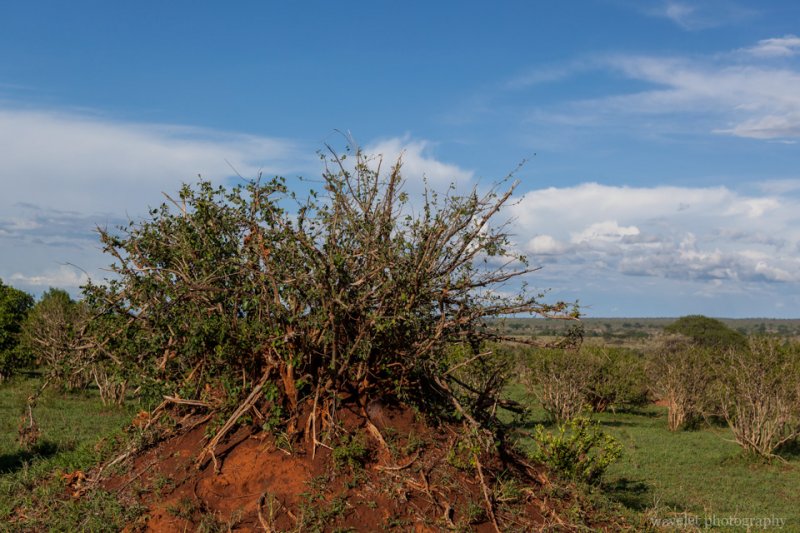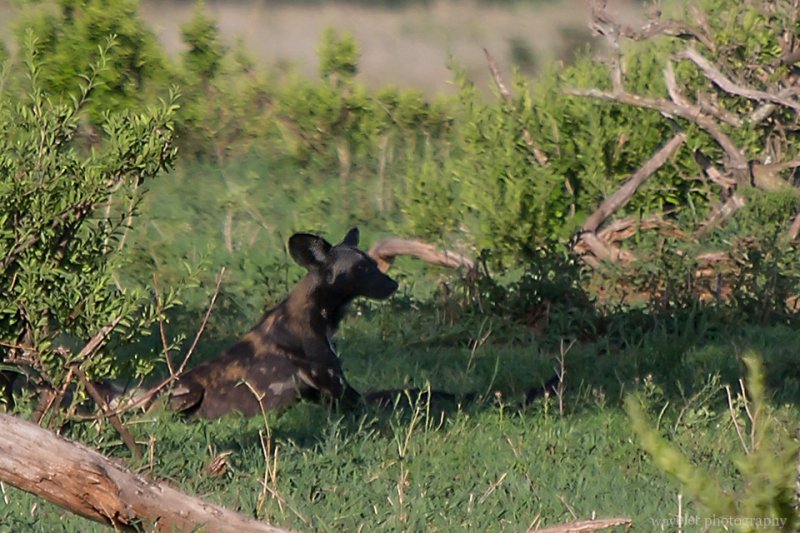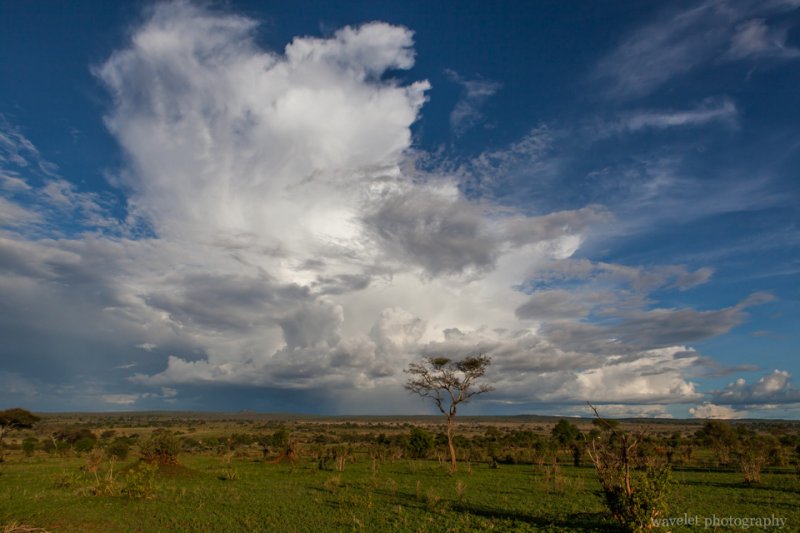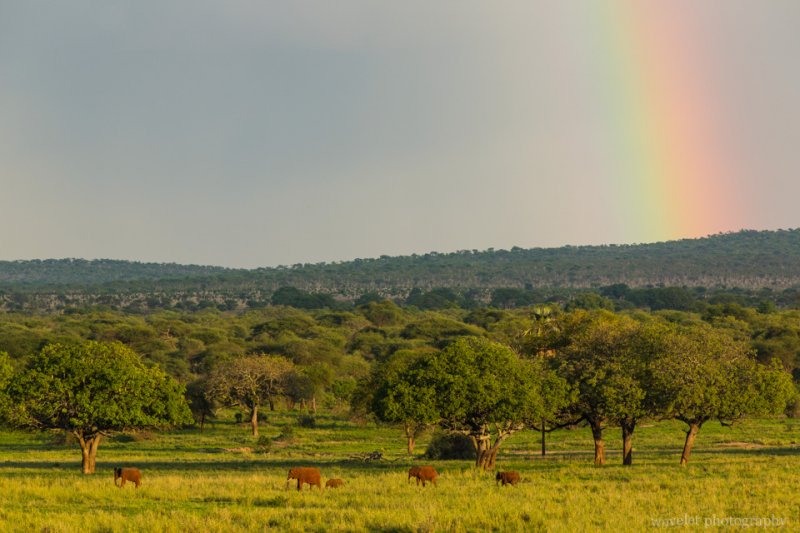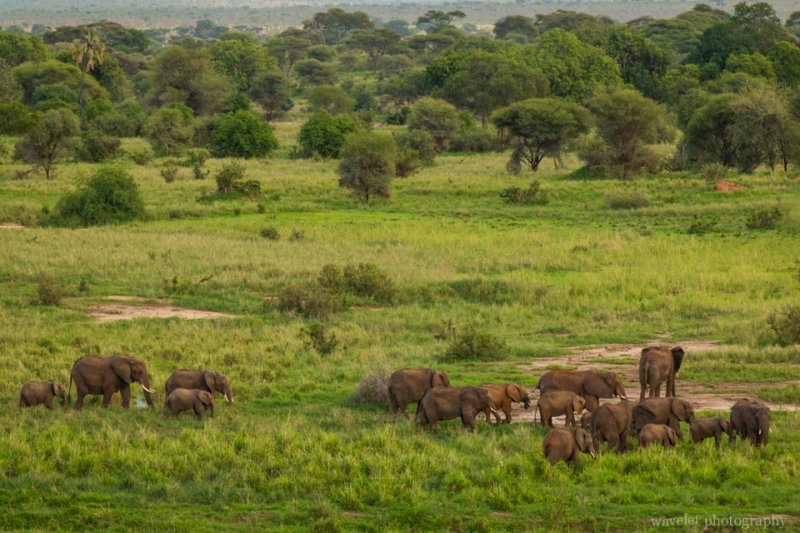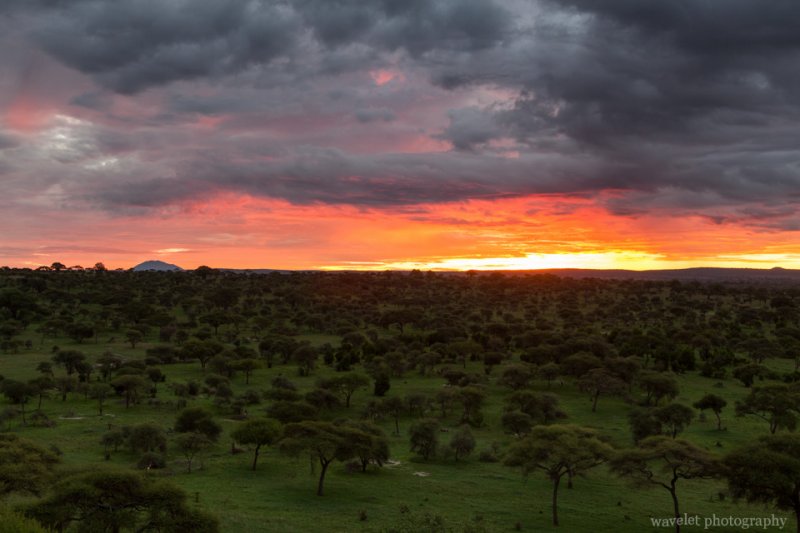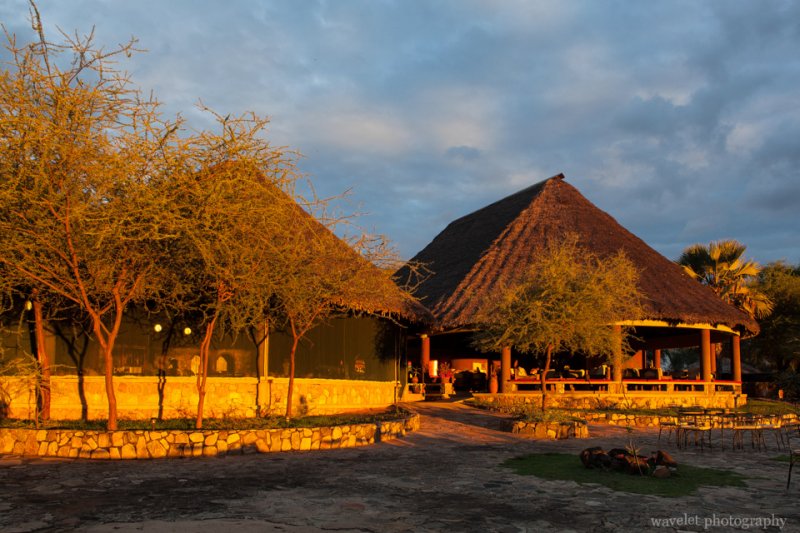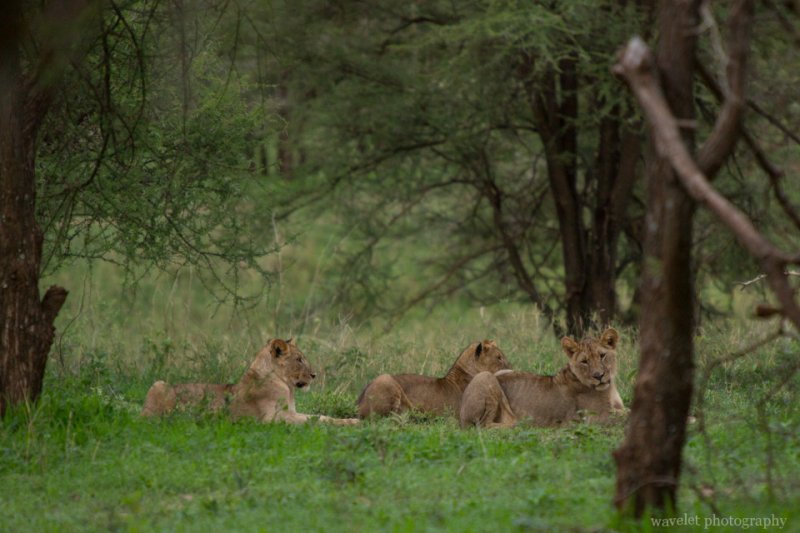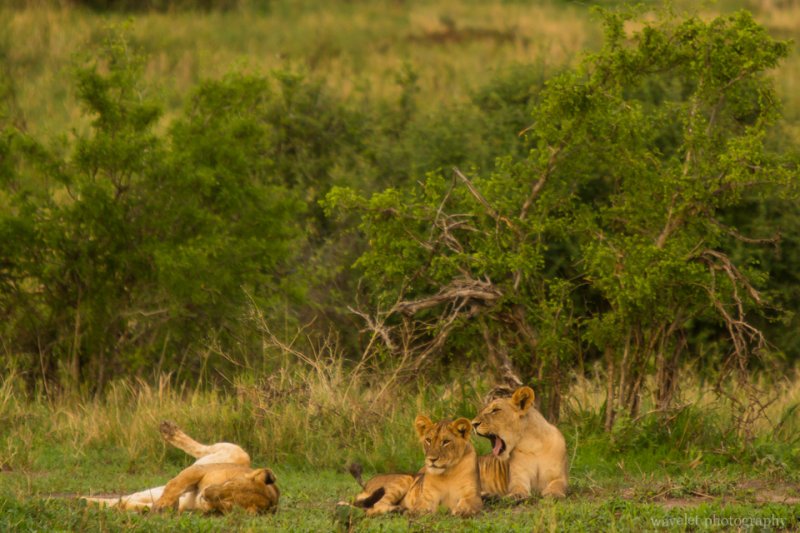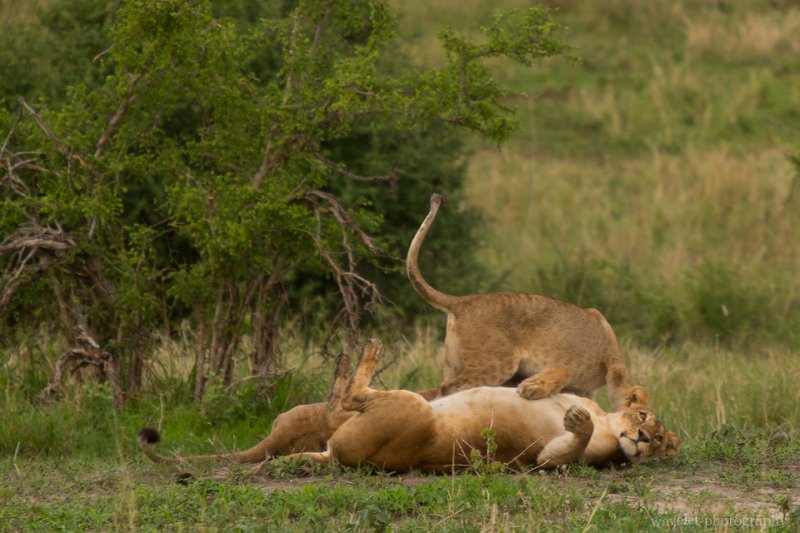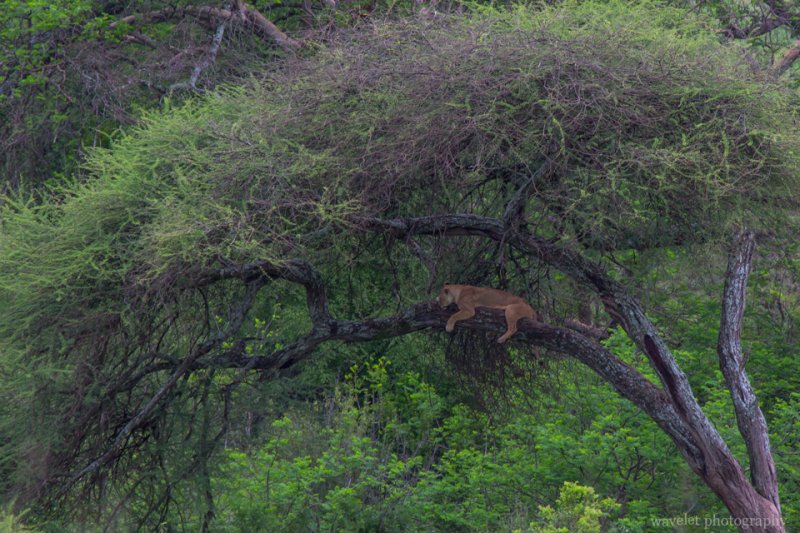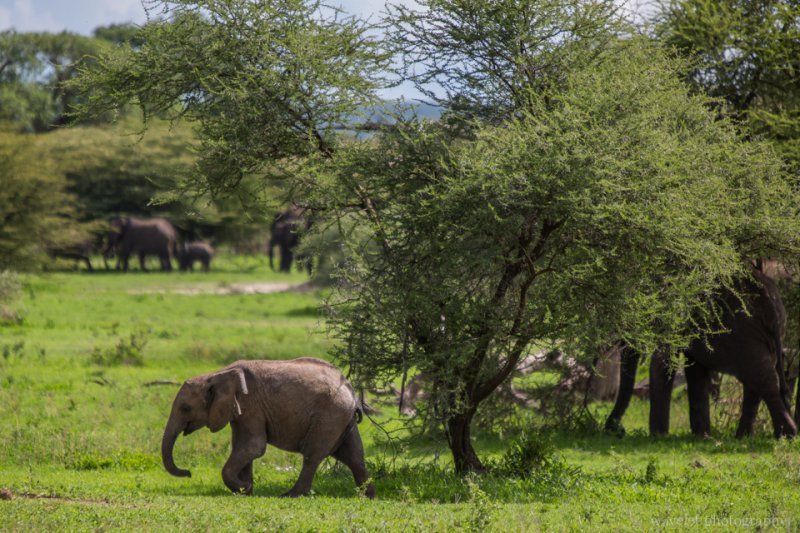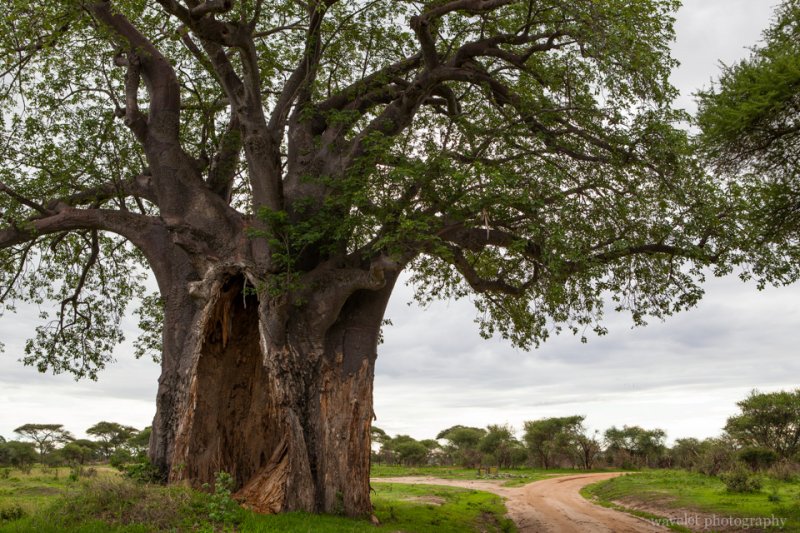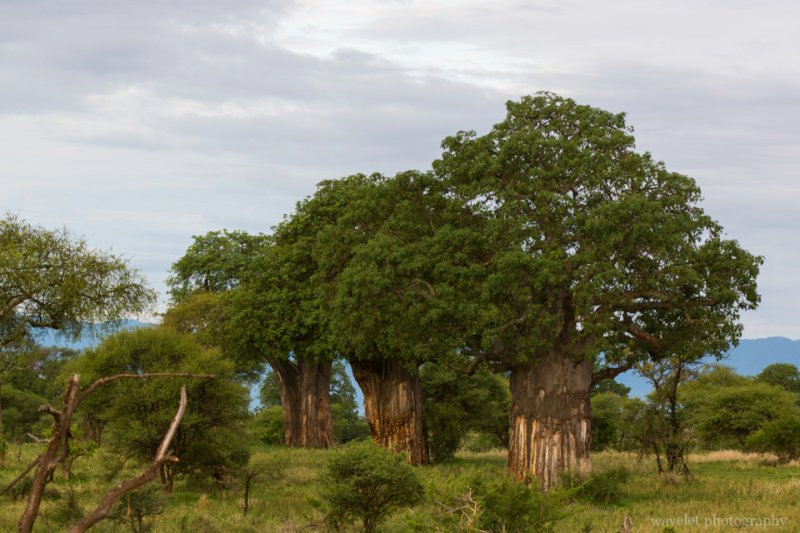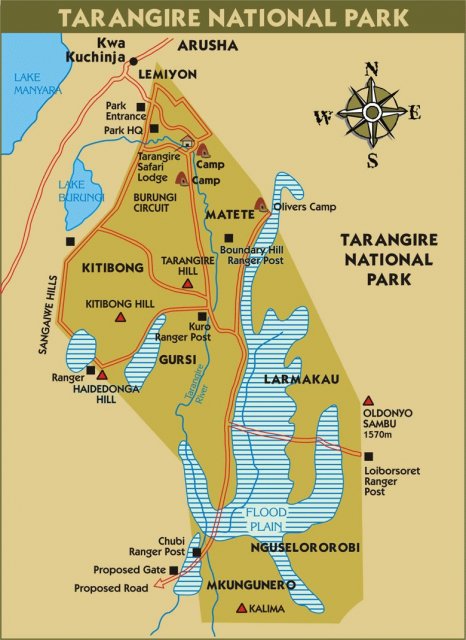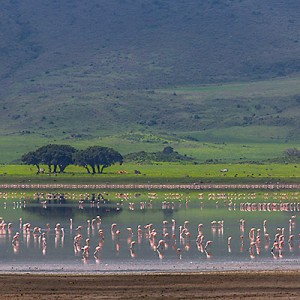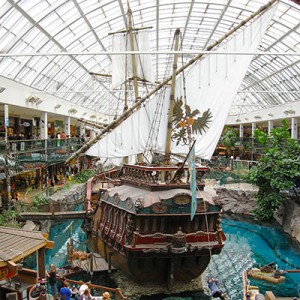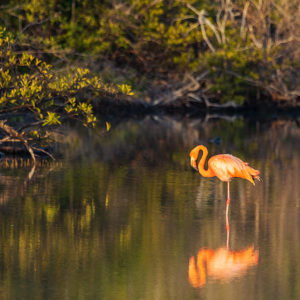2012.12.25~26We checked out from our lodge in the morning at 8:00am. After exchanged some cash at Arusha’s city center, we headed west to Tarangire National Park.
Half an hour later, we already left the majestic Mt. Meru behind, now we were surrounded by the open plain dotted with Maasai villages. The village normally consists of several thatched huts with low roof and a cattle or sheep pen. As Justin and us got more familiar, our topics of discussion started touching things of his life, such as his family and what he did for living. He became very angry when he told us about the government corruption and unfairness in the society. He is quite a passionate person.
It has been very cloudy since we left Arusha. Rain started about 1 hour after we were on our way and soon became a downpour. There are two rainy seasons in Eastern Africa. November and December is supposed to be a minor one. However, according to Justin, there was a drought in November this year and it only started raining in late December, so we saw higher than normal precipitation at this time of the year. The rain was so heavy so that many ponds and creeks came to live along the road. The good thing is that this kind of rain normally doesn’t last long, and most part of the road were well paved, we didn’t have any trouble to get to the park at 10:30am.
The area is scorching hot in the dry season. Animals migrate into the park along the Tarangire River, which is the only permanent source of water year around. It’s the greatest concentration of wildlife outside the Serengeti ecosystem. During the rainy season, most animals scatter over the region but elephants stay. Elephants and Baobab Trees are two huge creatures that can be commonly seen in the park.
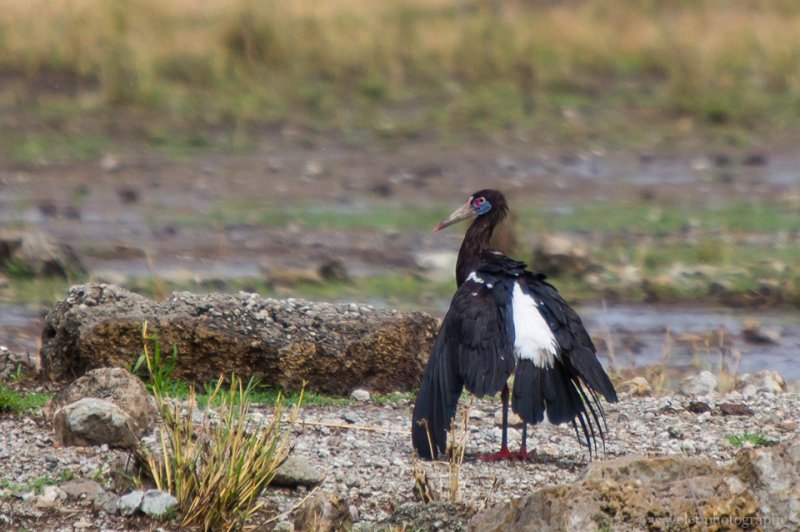
We were surprised to see ostriches in the park. In fact, ostriches are native to Africa and only farmed in Australia. Here, they are doing “pair dancing”.
Our plan was to have a short game drive, and then have our lunch before checking into the campsite. The landscape was getting more beautiful as we approached the Tarangire River. Wide panoramas of open Acacia woodland, rolling savanna studded with Baobab Trees, our jeep drove right into it. I was so excited and almost wanted to shout it out. This is exactly what I imagine Eastern Africa to look like!
The picnic area sits on top of a hill overlooking the Tarangire River. We had the same lunch box as the earlier day. We saw people from different countries, China, India and Arabic regions. Some of them were on the day-tour from Arusha. Human’s activities also attracted a group of black-faced vervet monkeys. They were just as aggressive as those in Mount Emei.
Tarangire Safari Lodge is one of tens of “luxury camps” established in Eastern Africa national parks. These camps run just like hotels, except the visitors live in tents instead of rooms. The tent is spacious and it has private bath and toilet attached to it. The quality of these luxury camps varies widely. Tarangire Safari Lodge is by far the best one we lived in.
The lodge is situated on a panoramic bluff. We were impressed once we step into the the lounge, which is also served as the lodge’s lobby. The open design offers 180 degree unobstructed view of the Tarangire River valley. All tents are build along the cliff so you can just sit in front of your tent and watch elephants, giraffes and impalas coming to the river or playing over the wide plain.
It’s hot and the sun is harsh at noon. We rested in the tent and went out again for game drive at 4pm. As we crossed the same bridge over the Tarangire River again, we found that the flooded river a couple of hours earlier now almost dried out.
Whenever you see several jeeps stopping by the road, it never hurts to stop and check too. This time was different – there were more than 20 vehicles lining together but we couldn’t see a thing. After asking other drivers, Justin told us that there were two African hunting dogs lying under the tree at distance. This is an endangered specie. There are only two groups of them in activity in northern parks of Tanzania. We were very lucky.
Another interesting scene we encountered later was a group of elephants drinking water and having fun around a pond. Sometimes they enjoyed the water maybe too much, they, especially the young ones, need some extra help to get out of the pond.
Because of the vast open space and the dramatic change of temperature in a day, the weather varies from time to time and from place to place in the park. While driving in the park, we often saw dark cloud gathered at somewhere far and the rain blurred the line between the cloud and the ground. After the thunderstorm, there was a rainbow. I asked Justin to stop the car and took these pictures. We were in awe of nature’s beauty!
None of the campsites has wall or fence. It can be visited by wild animals. After dark, the camp has its personnel to escort visitors between the dining area and their tents. Living in the tent is comfortable. Secure the zippers of the tent and apply the repellents, we were not bothered by mosquitoes at all.
We planned to leave early the second day for game drive, but the sunrise was just too spectacular to miss. The thick and dark cloud covered the whole sky, except a narrow gap at the eastern horizon. The sky was burning red as the sun rose. It’s violent yet brilliant.
We left the campsite at 6:30am. Only 200 yard out, we saw 9 lions in the bush. They seemed alert and gazing out over the open field outside the bush. One after another, quietly and in an organized manner, they walk out of the bush. Justin jumped on to the jeep, trying to see what their target is, he said their move normally meant they were ready to attack, but he couldn’t see anything. A couple of minutes later, these lions seemed to lose their interest. They sit down and eventually all lied down on the ground. What a group of lazy cats!
We drove to the picnic area again. It’s early, there were nobody but us, and some groups of impalas and Thomson’s gazelles running around, enjoyed the morning. As we were about to leave, Justin spotted something unusual far across the river – there was a lion on the tree. Trees are normally leopard‘s territory in Eastern Africa, not lions’, but this lion looked quite conformable on the tree.
What dominates the park is still elephants. They can get very close to the vehicle, within 20 feet. Although most of time peaceful, they can become aggressive if irritated, especially when they are with their calves. If you are faced with adult elephants, you’d better give them the right of the way, even you are in a car.
Baobab Trees are regarded as tree of life, because they are capable of providing shelter, food and water for animals and humans. Mature Baobabs are often hollow, their trunk skin from the ground up to 10 feet high are mostly gone. This is because Baobab Trees keep water in the trunk during the wet season for themselves to get through the dry season, but elephants know this trick and they peel off Baobab’s skin to get water. In the dry season, Baobab Trees lose all their leaves to preserve moisture. The tree is like it is planted upside down with its roots sticking up in the air.We returned to our lodge after 3 hours game drive and checked out at 10am. We were heading to our next destination, Lake Manyara National Park.
